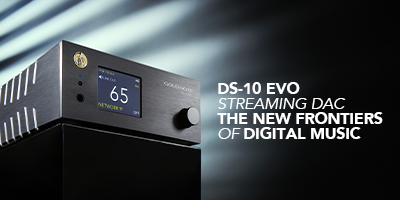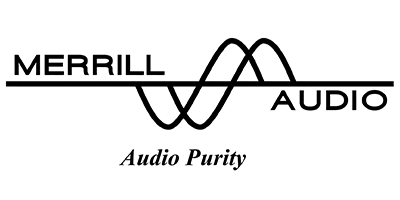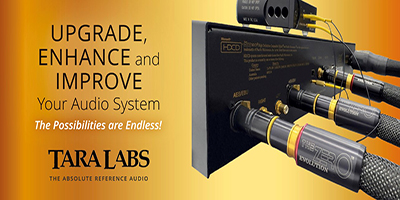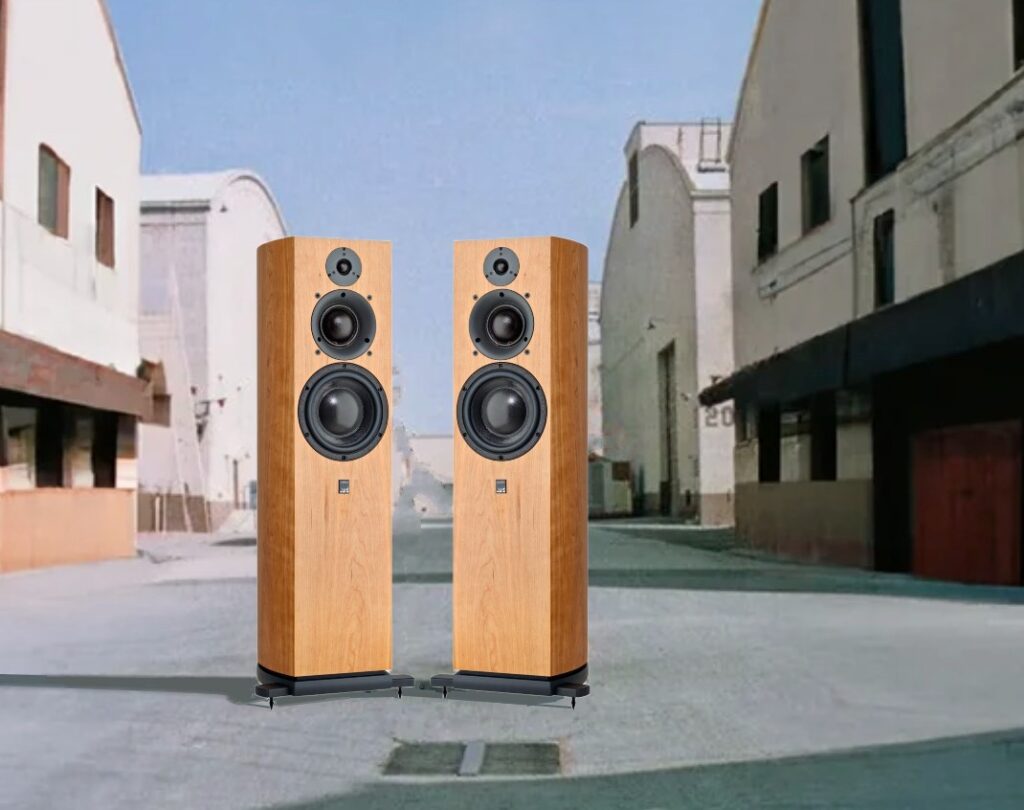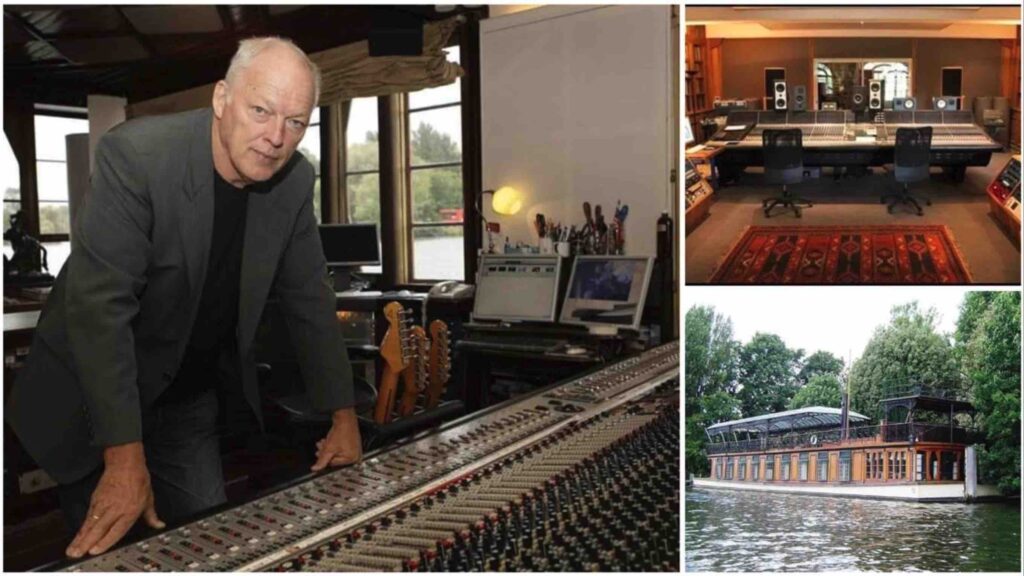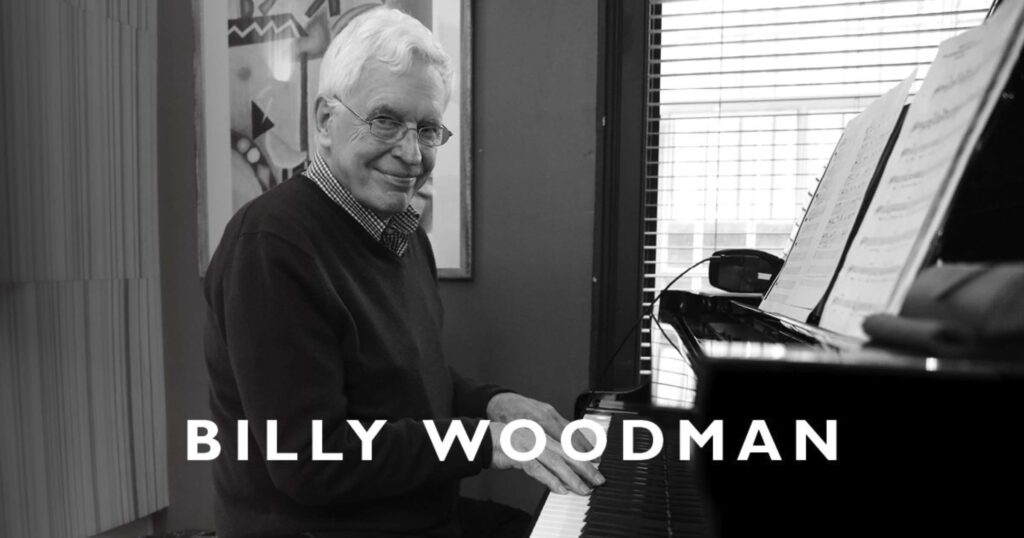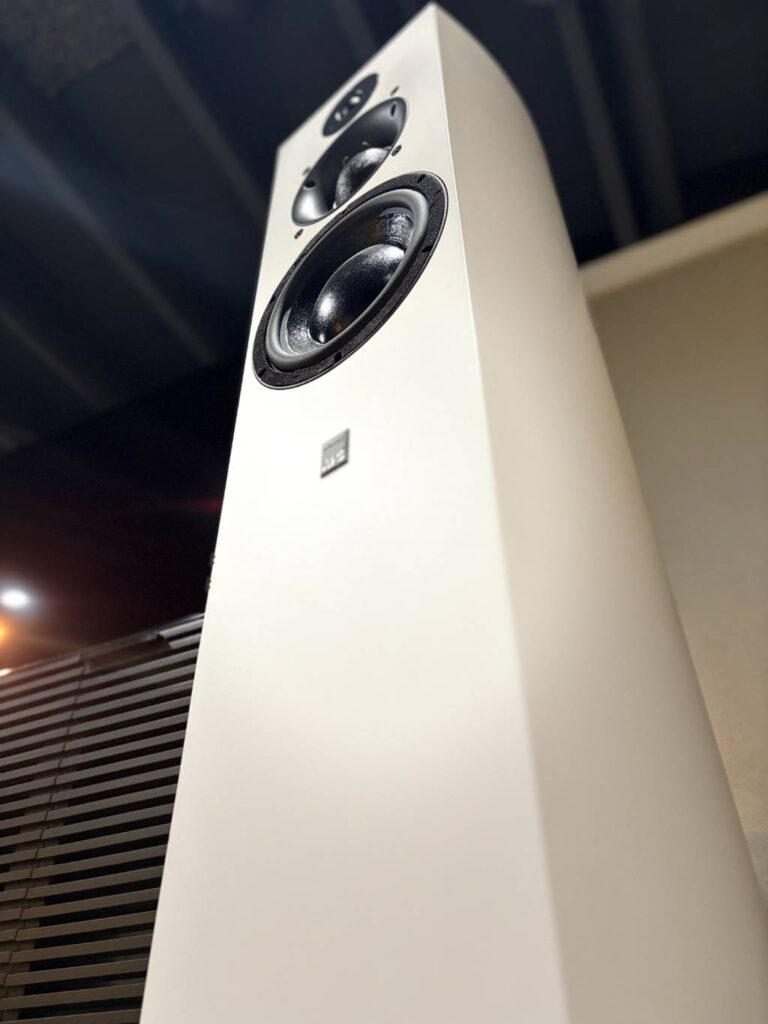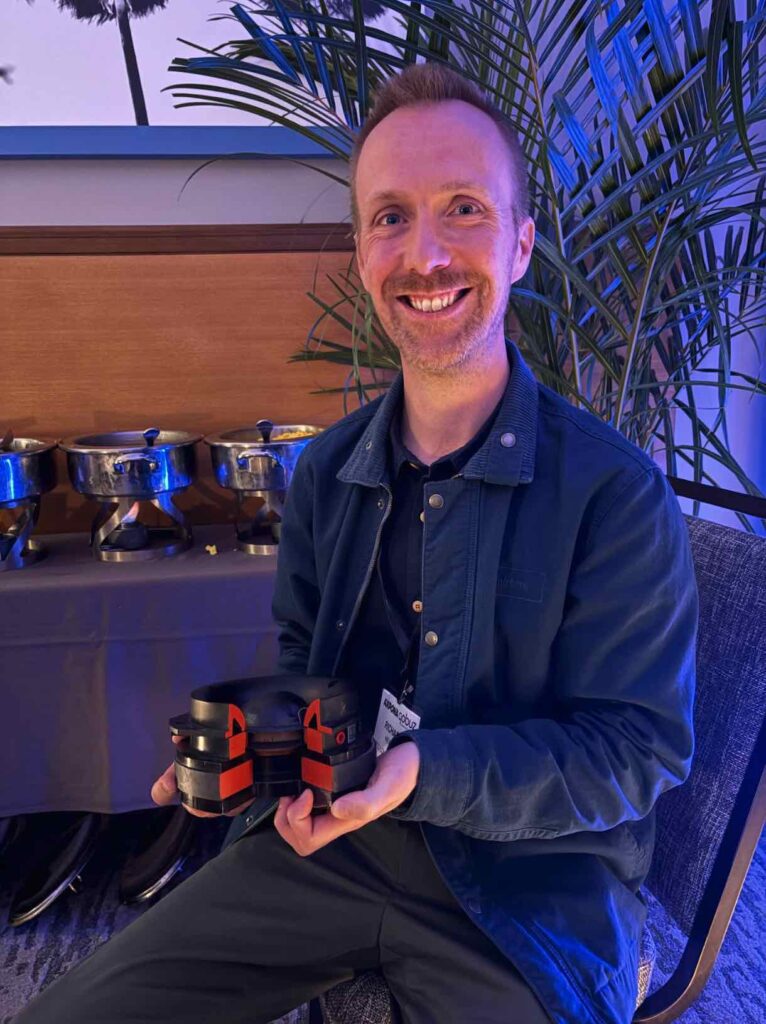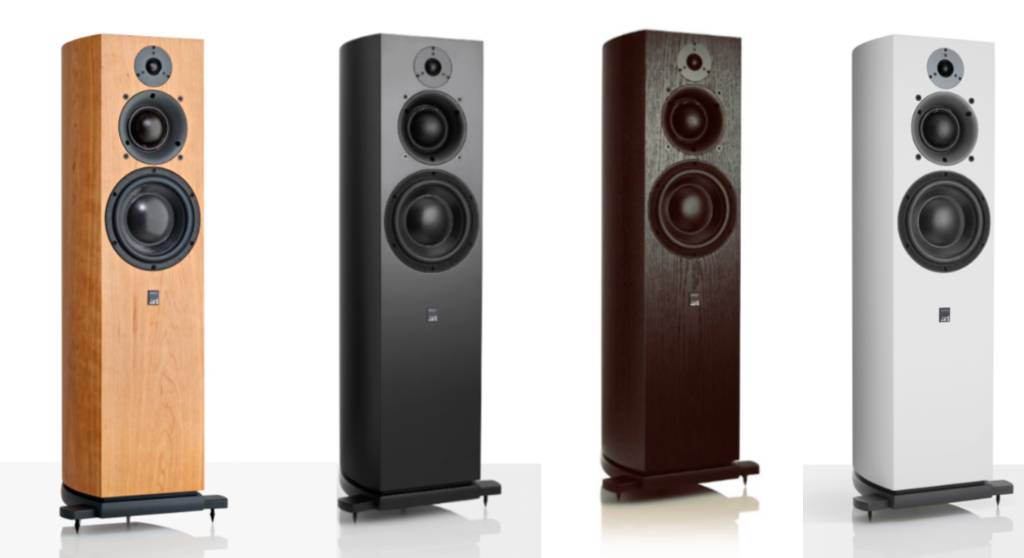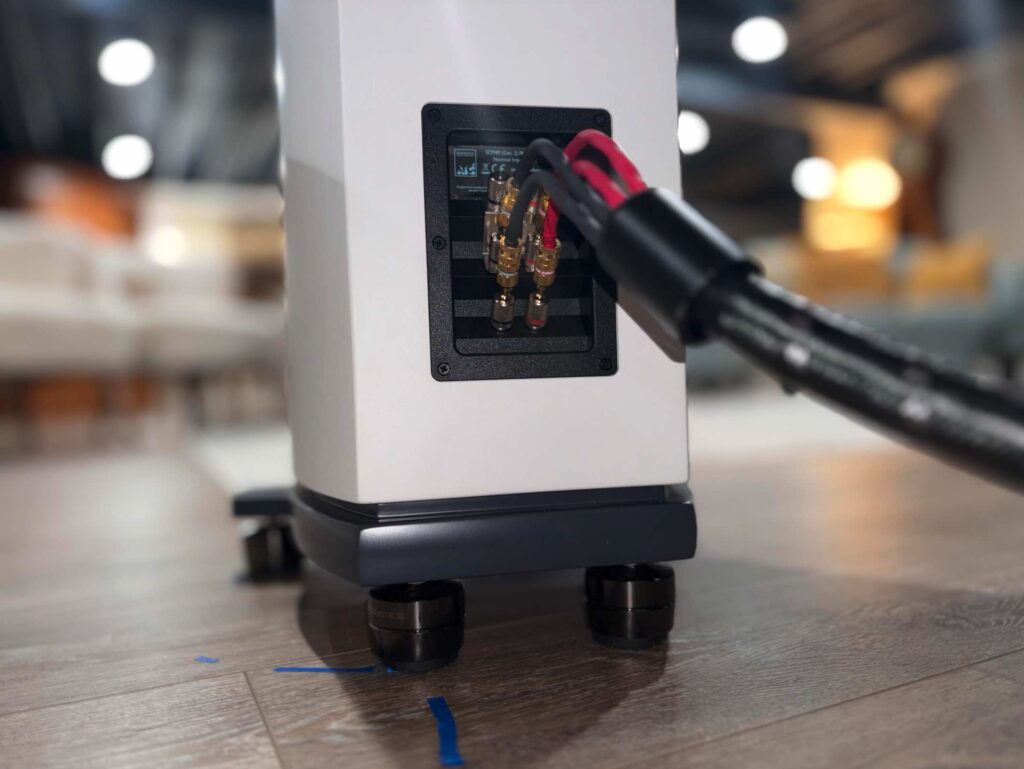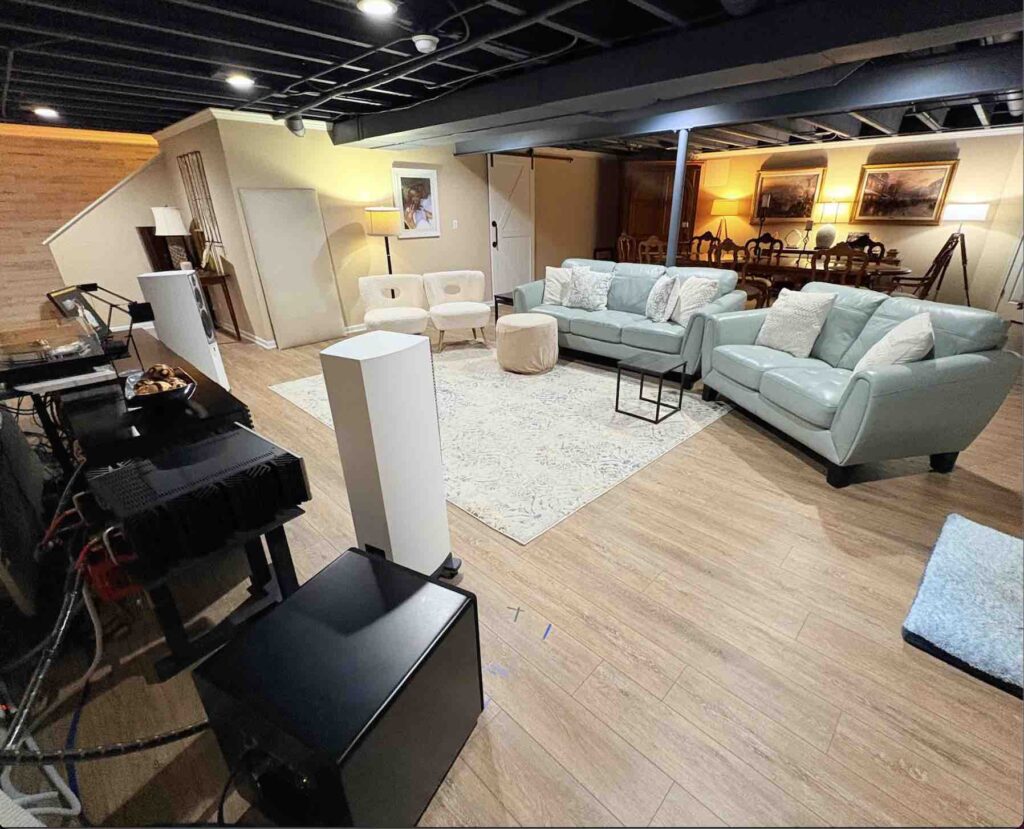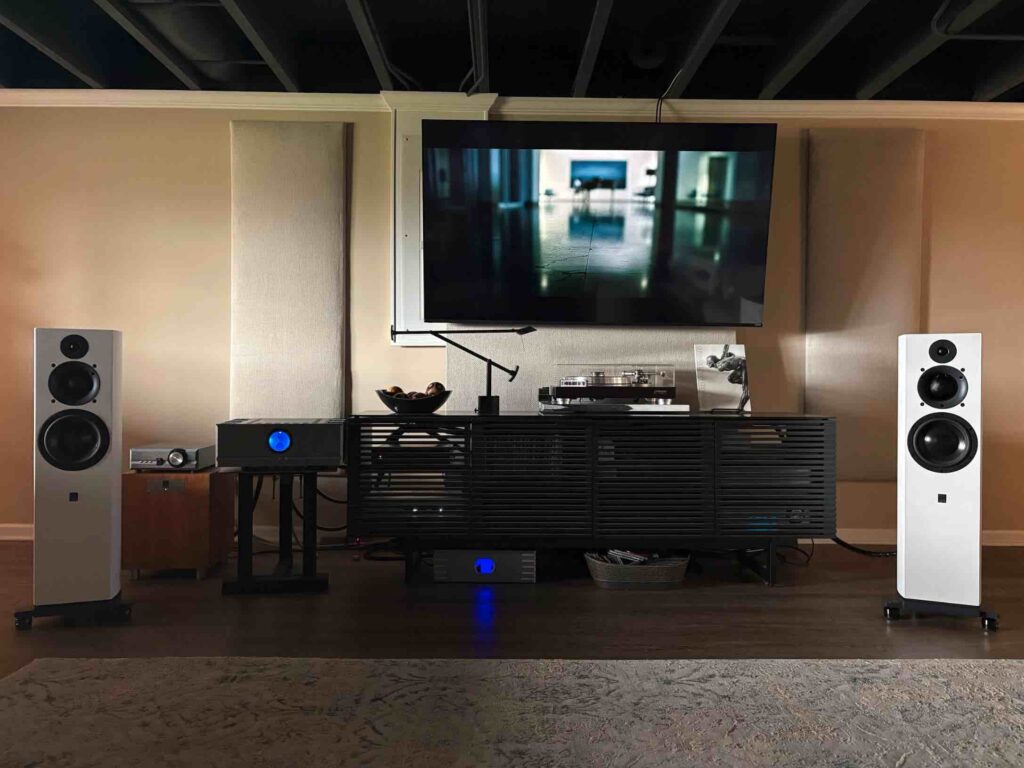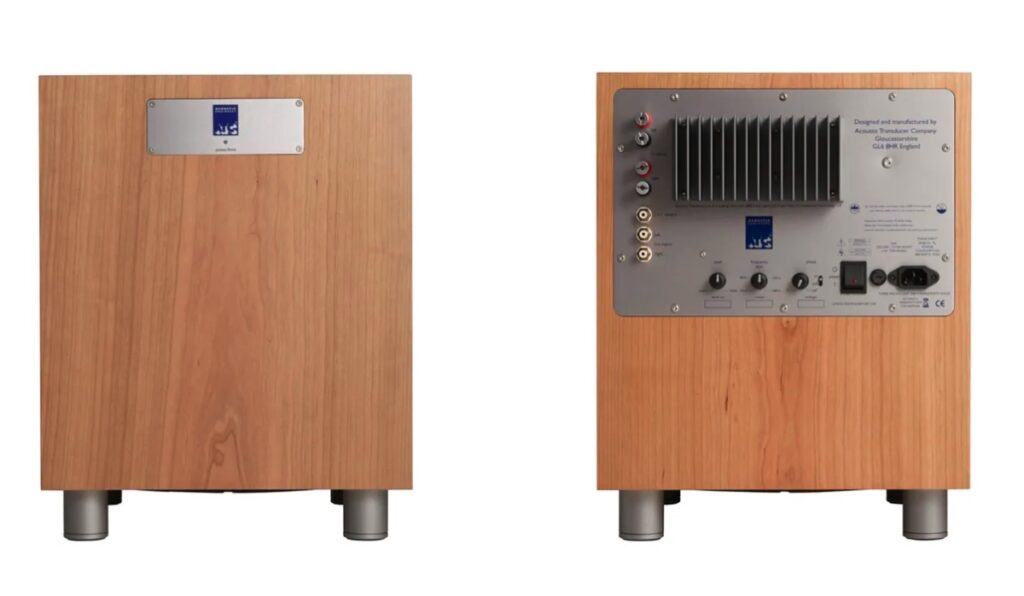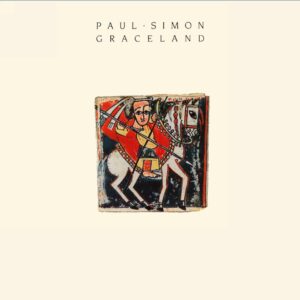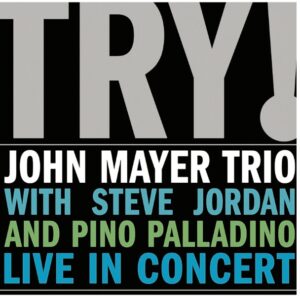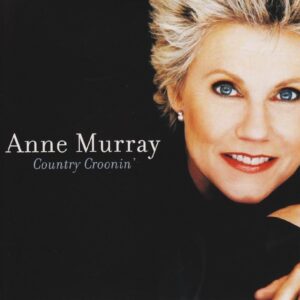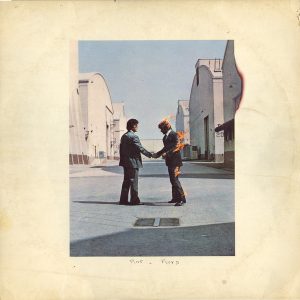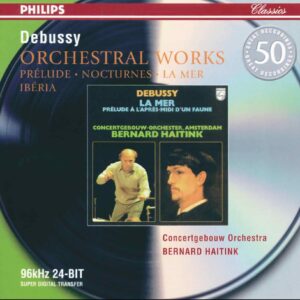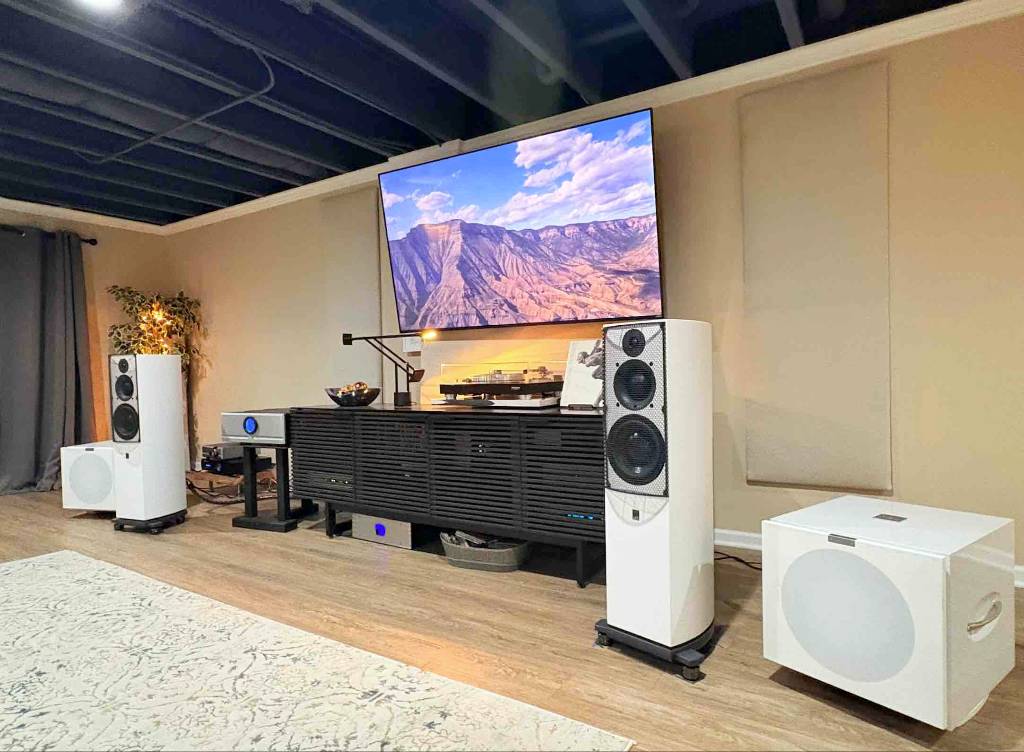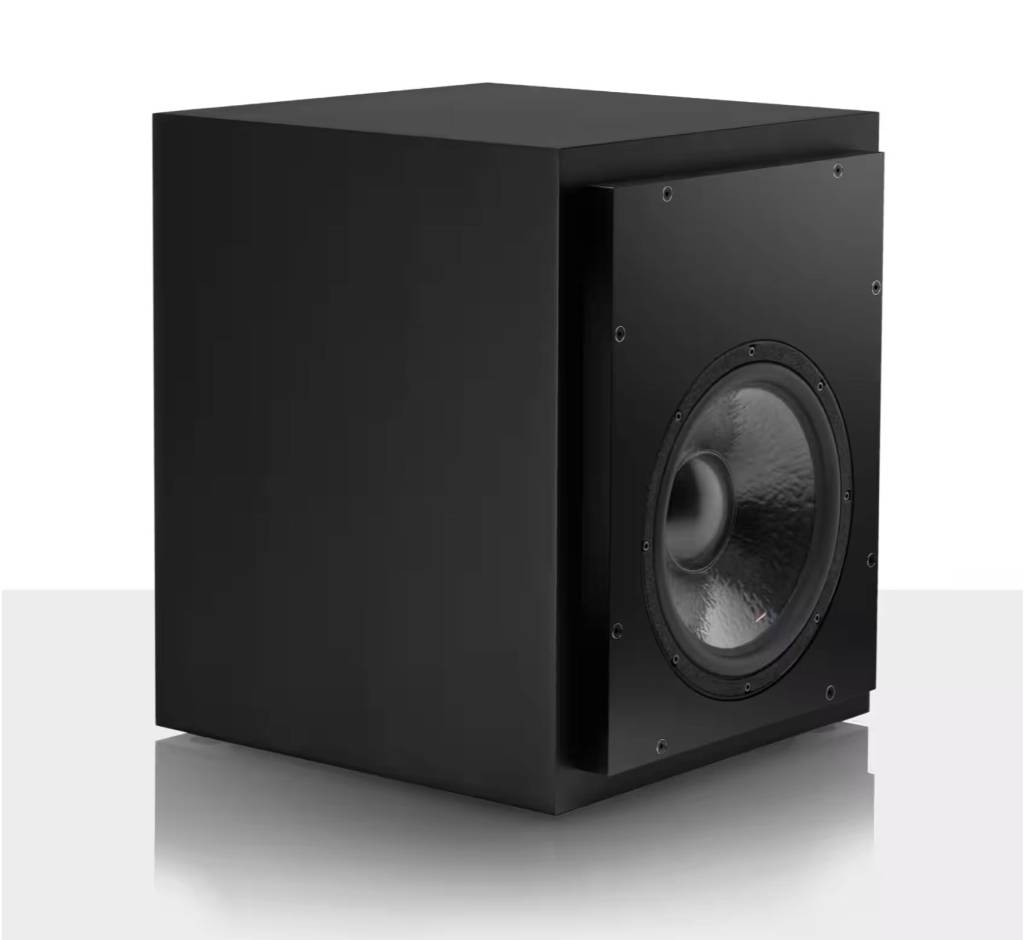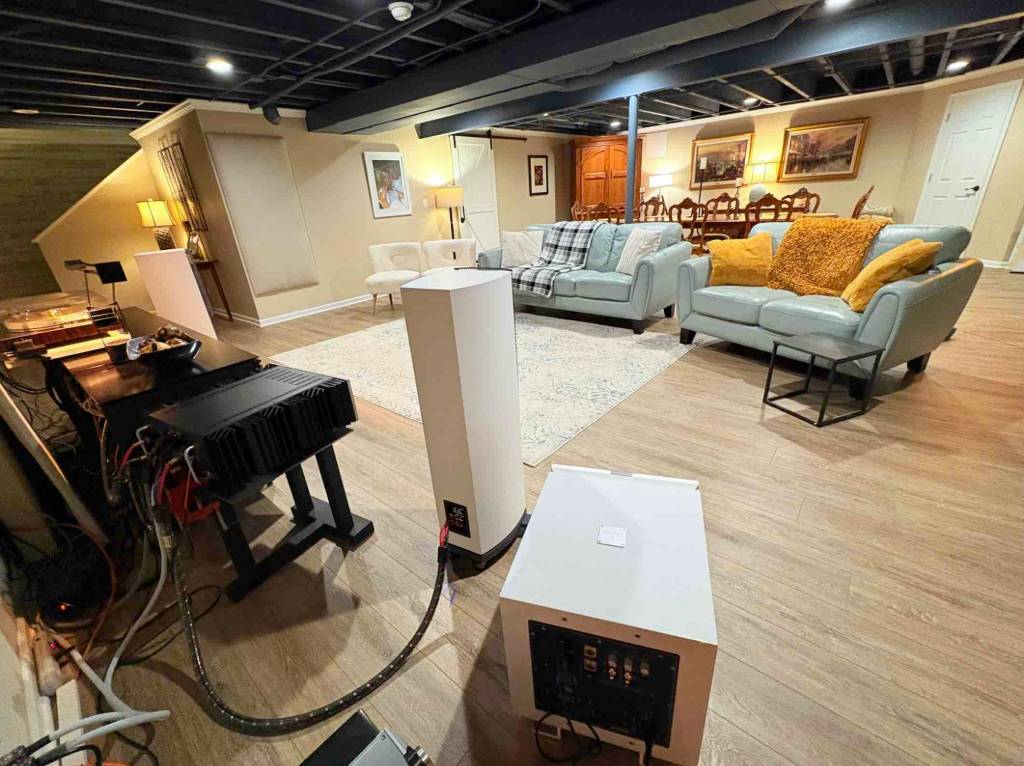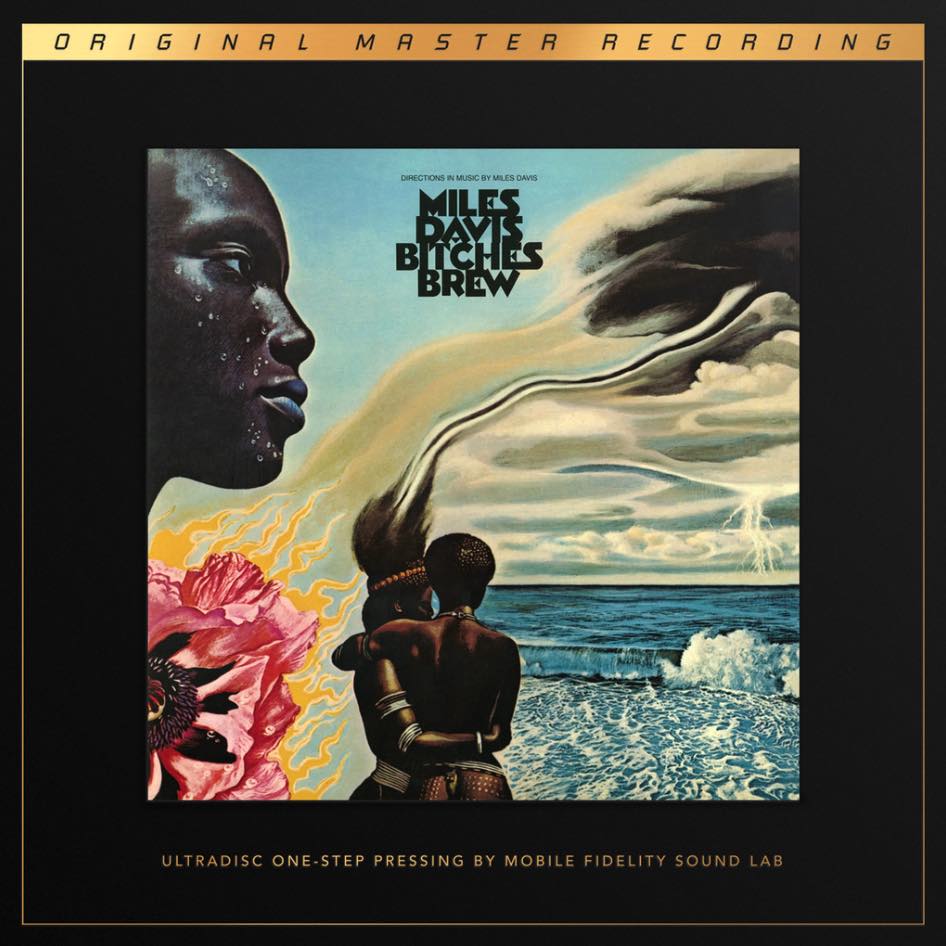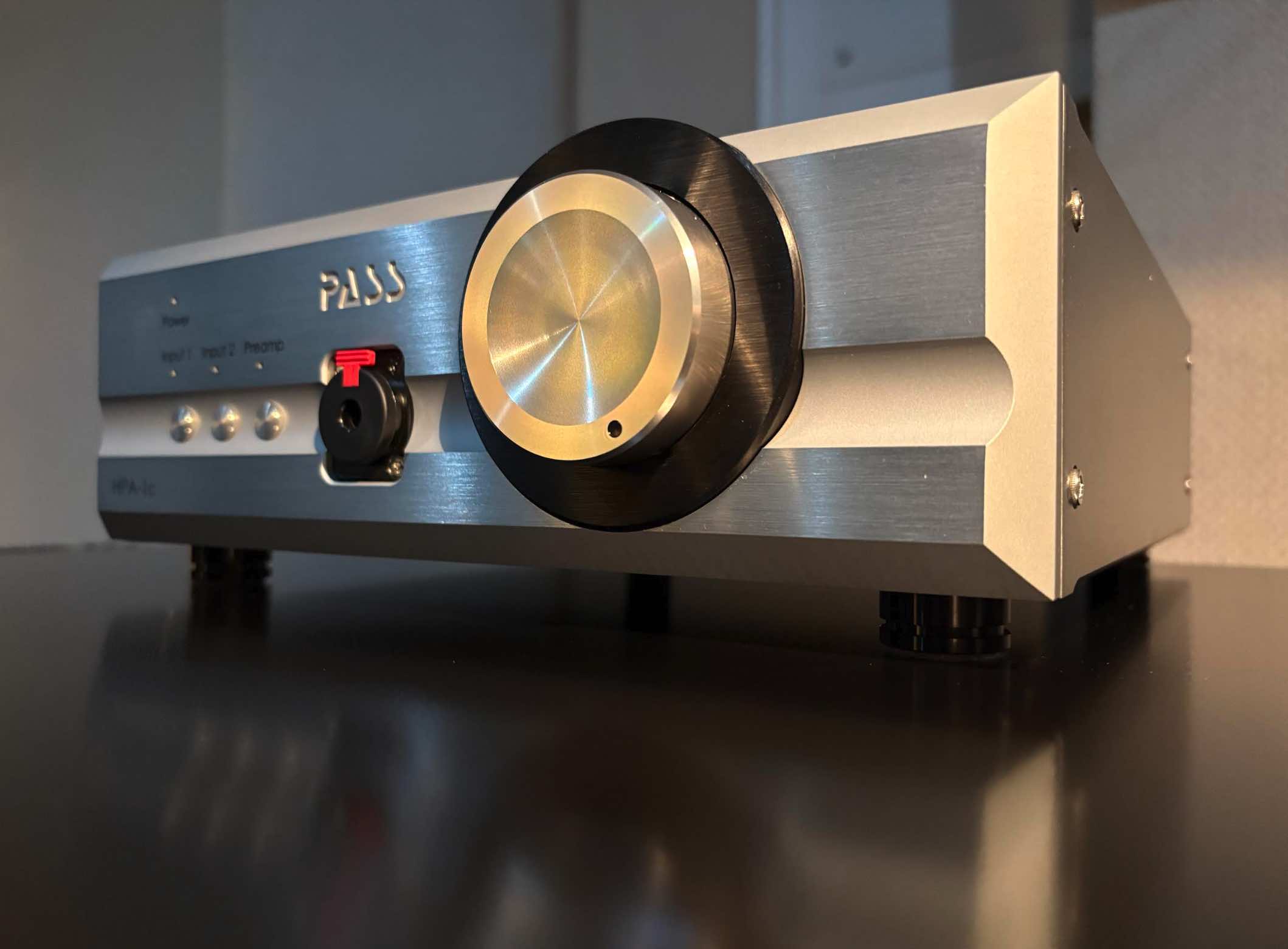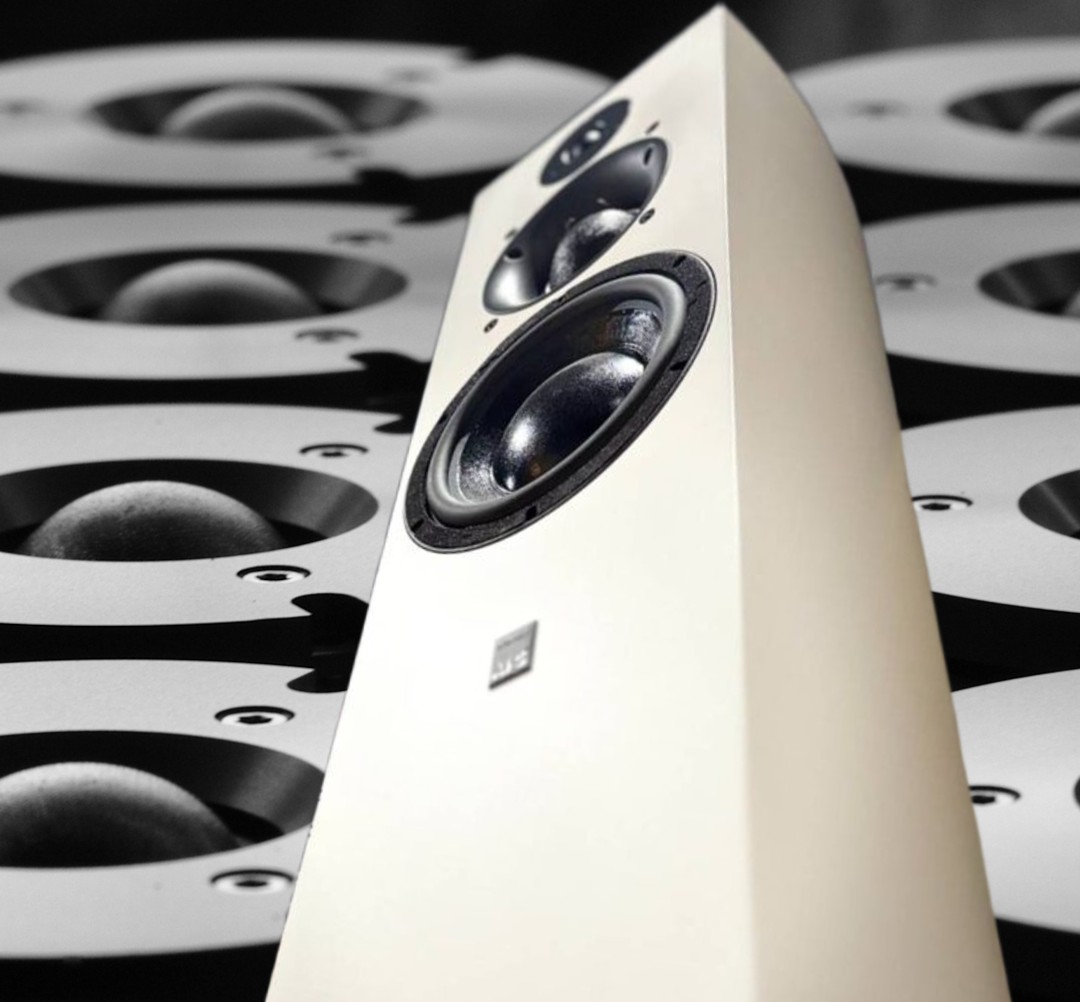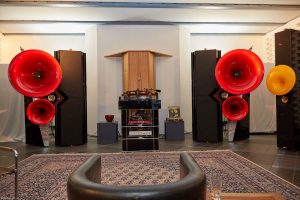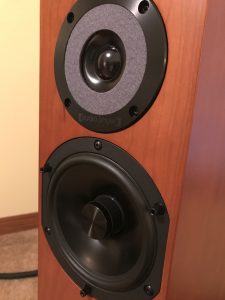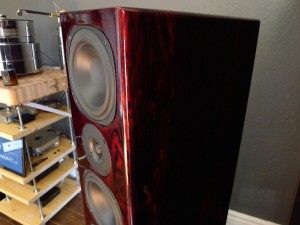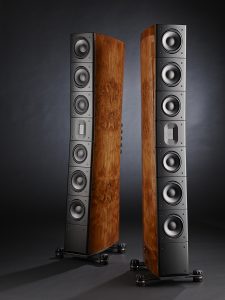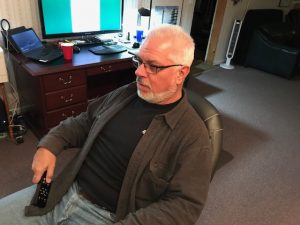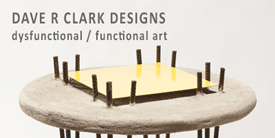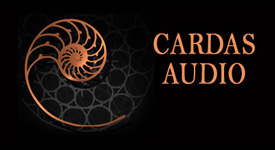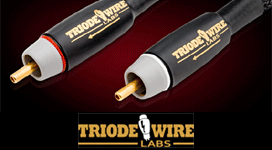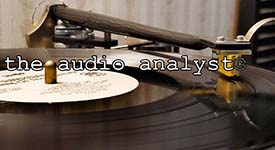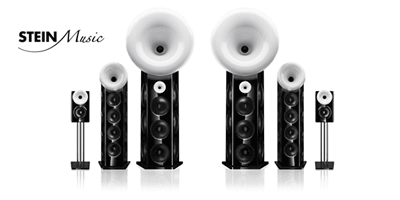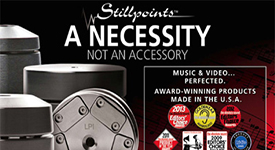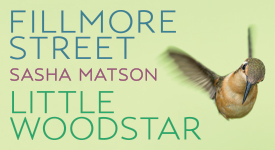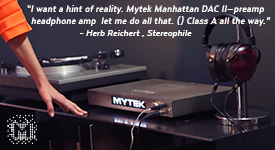Image backdrop by Aubrey "Po" Powell, courtesy of Reddit.com
In the 1970s, engineer and entrepreneur Billy Woodman ran a tidy business designing loudspeaker drivers and building them in his factory in England, supplying drivers OEM to audio manufacturers like Proac in the consumer market and clients like Yamaha in the pro audio realm. So says Brad Lunde, owner and founder of Trans Audio Group and Lone Mountain Audio which imports ATC (Acoustic Transducer Company) Loudspeakers on the pro and consumer sides, respectively, into the United States.
"Billy was a rather visionary engineer and developed this product that was very unique called the 'Three-Inch Midrange Dome.' And at the time when he developed it in the 70s, there wasn't anything remotely like that. Nobody had a viable three-inch midrange dome," Lunde says. "They were really hard to keep stable because they were large. And they're really hard to figure out how to get them to work in a low distortion kind of way—and Billy had figured that out in a very large driver. And he'd figured out something pretty clever: Wouldn't it be great if we could have a driver that would cover the entire vocal range? No crossover in the middle of any vocal. No crossover point in the middle of the most important range content that's in music. So, he developed a driver that would cross over at 380 at the bottom end and 3500 in the top end. No one had anything like that.
"He was really passionate about that and wanted to sell this driver, but nobody would buy it. So, he had to build his own speaker to sell it. He created the 50—the ATC SCM50 to sell that mid dome, and that became very successful. And a lot of England's best musicians sought him out and bought his product."
Pink Floyd's David Gilmour, at left, who purchased the Astoria Boat and installed a recording studio featuring ATC monitors (see the top right photo) in it that was used in some Pink Floyd and other records (images courtesy of the "David Gilmour The Legend" Facebook page).
"For example, he got hooked up early on with the Pink Floyd people. And, in fact, he built speakers for the Astoria Boat," Lunde continues. "If any of the people know Pink Floyd lore, they know about the Astoria Boat. He built custom ATC monitors for that boat a long, long time ago."
In 1986, Pink Floyd's David Gilmour purchased a century-old antique houseboat that he'd spotted at Tagg's Island, London, initially for a holiday refuge, but later, to deploy as a scenic recording studio on the water. (www.slashgear.com)
Used for recording two of Pink Floyd's later albums, the band recorded in one room and used two other rooms to place amps and other equipment used to complete the recording, while the control setup in the main room housed other modern recording studio fixtures. Daniel Feininger notes in an article for Slashgear.com entitled, "David Gilmour's Antique Houseboat Turned Recording Studio is Pretty Incredible" that "Perhaps the most interesting part of the Astoria's role in recording Gilmour and Pink Floyd is the ambient background noise brought into the mix. The houseboat is by no means soundproof, so the river and passing birds, boaters, and other external noises can be heard in the final productions if you listen carefully. This adds a unique texture to Gilmour's music that can't be replicated." (You can read more HERE.)
In another interview, David Gilmour recounted, "James Guthrie was the first person to come across ATC speakers; he raved about them and suggested we have a listen and check some out on the boat. He was already using them himself. We finally did, in I think around 1990. We got some ATC 200s. They were a huge step forward in terms of detail, clarity and neutrality." (www.transaudiogroup.com)
Both Pink Floyd and Supertramp were early customers. ATC went on to great success in pro audio (you can view their extensive client list HERE) with their introduction of complete speaker systems and additional OEM versions of their high power PA drive units in speakers by numerous leading manufacturers. And building on the success of their reference quality precision-made monitors, they began producing smaller speakers ranging from SCM7s through 10s and 20s to offer their ATC performance and reliability to many new customers in pro and consumer markets. Moreover, because of their commitment to multi-channel mastering and involvement with leading players in pro audio, including Sony Music and Telarc, ATC products are installed at some of the world's most prestigious multi-channel studios and auditoriums. (atc.audio)
Photo of the late ATC founder, Billy Woodman (photo courtesy of atc.audio)
Sadly, Billy Woodman passed away on July 21, 2022, at age 76, following a prolonged illness. His son, Will Woodman, left behind a successful career in corporate law and took over the helm of ATC Loudspeakers as its managing director.
"Dad's emphasis on running ATC as a family business has remained, and under his leadership and guiding hand, we have ensured that ATC has continued to grow and succeed with the constant support of fellow Director and lifelong friend, Bob Polley," he wrote in a commemorative note on their website.
"Dad was an extraordinary man, not only gifted as an engineer but also as a jazz pianist, and undertook exquisite restorations of vintage cars. He was truly an exceptional man in every aspect of his life. He was one of life's true gentlemen and leaves a remarkable legacy. He inspired many, not least me, in how he led his life, always with courage, kindness, and generosity."
My Introduction to ATC
Ron Gruber, a retired mechanical engineer and senior administrator on The Audiophile Group, a popular Facebook page with over 2,500 members, periodically encouraged me to take a closer look at ATC loudspeakers. And this last year, Jam Somsundram, president of Quadratic Audio (maker of the MC-1 step-up transformer) and designer of the Pass Labs HPA-1 Headphone Amplifier (both of which I use regularly), insisted that I review the ATC SCM40 speakers. They're incredibly well-engineered and a steal at their price point, he assured.
I did a little digging and, intrigued, reached out to ATC's U.S. importer, Lone Mountain Audio. Leland Leard, ATC's amiable Chief Business Development Officer, expedited the process and, as the reader shall soon see, the ensuing review process has proven transformative to my personal audio experience. (You can read Lone Mountain Audio's Brad Lunde's experiences and insights on ATC and the audio industry as a whole in my interview HERE.)
ATC's engineer from their factory in England, Richard Newman, holds the S midrange driver of the SCM50, SM75-150S soft dome midrange driver
At the core of the SCM40's performance is its coveted soft dome midrange driver. Although it's not the same version that goes into their pro line and higher-end consumer models, like the SCM50s on up, they share similar characteristics. ATC Engineer Richard Newman, who works at their factory in England, elaborated on their merits at the ATC room at AXPONA 2025.
"Billy was a keen jazz piano player," he said. Before he designed the soft dome, there were, broadly speaking, two different approaches to loudspeaker design- optimizing for high dynamic range or for HiFi levels of detail. Billy brought together both approaches with his midrange dome. Its invention enabled the reproduction of piano at realistic listening levels while maintaining low distortion and timing detail, for example. The selection of a soft dome versus a hard one was for a specific reason: a hard dome deals with some resonances by pushing them into higher frequencies, yet some irritating artifacts remain. On the flip side, their softer dome midrange features highly damped moving structures, so the energy is removed from any mechanical resonances, resulting in low coloration. And when driving them hard and loud, resonances remain damped and completely controlled. Concentrating on constant performance and linearity with volume increases, "ATC speakers can do the gymnastics required for high dynamic range reproduction without adding distortion," Newman says.
Their midrange drivers are very efficient from 380Hz to 3.5kHz. "There's a hell of a lot of energy there," he adds. (Their bass drivers handle lower frequencies up to 380Hz.)
There's one common midrange dome diaphragm assembly but two different magnet configurations: the standard uses a six-inch diameter magnet while the Super version uses an eight-inch diameter magnet. The SCM50's midrange driver is a higher-specification version of the one used in the SCM40, delivering improved efficiency and bandwidth due to its stronger magnet and other refinements. The SCM40's standard version, while still a high-quality driver, is less refined and efficient than the S-spec version in the SCM50. The S versions are more efficient with lower distortion and are required to partner with bigger bass drivers.
"Sonically, the parts are the same," ATC's Brad Lunde added on the differences between the standard and Super versions. "You can't even hear the difference. They sound the same, just one will play louder than the other."
Physical description
The ATC SCM40 loudspeaker is gracefully understated, a marvel of minimalism—which is one of the things that attracted my wife, Belle, to it (since it occupies a shared space, it was a consideration). The initials, SCM, stand for Studio Control Monitor, and the '40' for the volume in liters inside the speaker. Standing 38.58" tall with a 9 1/4" wide front baffle, it boasts a 6 1/2" bass driver, a three-inch ATC Soft Dome midrange driver, and a one-inch Neodymium tweeter on the top half, with a rectangular badge reading, "ATC Acoustic Engineering" just below. Its curved sides narrow down to 7" at its rear. Upfront at its base, a 14.56" wide wooden plinth is supported by removable spikes, while two additional spikes are located toward the cabinet's rear (aftermarket feet, like the IsoAcoustic Gaias that I'm using, can be substituted for the spikes).
Bi-wired Straight Wire Crescendo 3 speaker cables are plugged into the ATC SCM40's binding posts, while the IsoAcoustic Gaia III Isolation feet support the speaker below.
Four millimeter binding posts arranged in a tri-wire configuration with metal jumpers are located near the bottom rear side. A magnetic mesh protective cage can be placed over the tweeters and drivers to protect them from small, probing fingers.
A Sidenote on Tri-Wiring and Bi-Amping Options, Crossovers, and Other Salient Characteristics
The SCM 40 has tri-wire options for those who are brave enough to vertically tri-amp these speakers with three stereo or six mono block amplifiers. The speakers could also be bi-amped, which is probably a much saner approach.
The speaker uses second-order crossover networks on all their drivers with Zobel compensation on all drivers. The crossover frequencies are 380 Hz and 3.5 kHz. The quality of components on their crossover, with exclusive use of air core inductors and polypropylene capacitors, is exceptional for a speaker of this price point. The cabinet construction is solid with wood veneer and adequate bracing.
The best part of these speakers is the quality of their drivers, with the star being their midrange driver, all of which are built in-house.
The speakers have a flat frequency response with an exceptional polar response. They can play loudly with the right amplification and exhibit great dynamic range and a stable soundstage with low distortion. The speaker has a lowish efficiency (85dB), indicating the need for at least 70W, but the impedance curve is reasonably flat with no nasty dips. It’s easily the best or one of the best speakers in its price class. (Somasundram, personal communication, 19 May 2025)
The Room
My listening space sits on a cement slab covered with bleached-gray vinyl plank flooring in the front half of a 32' by 24' wide, open-plan basement room. A louvered charcoal gray BDI Corridor media console holds electronics under a 75" flatscreen TV mounted high on the front wall, while a Micro Seiki BL-91 turntable on a quartz platform hovers above the console next to a Tizio Lamp, supported by an unseen weightlifting stand behind it. There's a Richard Grays Power Company Special 1200 power conditioner underneath, while a Pass Labs X150.8 amplifier, with its brushed aluminum faceplate, round blue-lit A/B indicator and massive heatsinks, sits off to the left on a 1/4" steel pate clamped to a black Sound Anchor speaker stand. Some 10 feet away across an area rug, a mint green leather couch and loveseat, white fleece accent chairs, and an ottoman are arranged in a semi-circle. Exposed joists, painted blue-gray, feature rows of dimming puck lights and gray acoustic treatment above the rug, while Belle's large, gold-framed Thomas Kinkade reproduction paintings and a big white-framed photo of us accompany the neutral fabric-covered acoustic treatments adorning beige-tan walls. Thick gray blackout curtains cover garden windows to the left and a white hanging barn door separates the space from the HVAC and storage room on the right. A long maple dining table, armoire, and short bookcase occupies the room's rear, serving as a formal dining area (you can read more about its construction HERE). My office is tucked in a 10' x 10' alcove to the rear left of the room, while the stairwell sits kitty corner in a foyer off to the front right. A ficus tree with lights, and several floor and table lamps around the room round out the look. (Note: You can read more about my complete system by clicking on my name in red at the beginning of this article.)
Initial Impressions
Parked upfront, three and a half feet from the front wall, the SCM40s are stately white pedestals, mirroring the ivory fleece chairs, crown moulding, and barn door; along with the teal couches, they brighten-up the space and contrast with the tan walls, dark media console and ceilings above. With the lights down low, it's a warm, calming, minimalist aesthetic and a great acoustic space.
Looks aside, the SCM40's overriding attraction were their very natural, accurate, and detailed sound. That caught our attention right away and only grew as the tweeters and bass drivers settled in. Being a sealed speaker design, the air inside acts like a spring, helping to control the cones' movement; when the cones move outward, inside pressure decreases, while when it moves inward, the pressure increases, helping create better diaphragm control that leads to greater sound accuracy. (https://pioneer-india.in)
On the downside, at first, the bass drivers seemed a touch stiff and limited when playing bass-rich tracks like "Your Momma Don't Dance" on Kenny Loggins's Outside: From the Redwoods album. Also, the tweeter seemed a bit rolled-off at the top. These apparent weaknesses become more apparent when compared to my reference $16,000 Usher ML-802 loudspeakers. A foot taller, almost twice as heavy (at 128 pounds to the ATC's 68.31 lbs.), and sporting two eight-inch bass drivers to the ATC's single, 6 1/2" woofer, the Ushers dug deeper in the lower frequencies, and using its magnesium alloy tweeter, it had more extended highs than the ATCs, with their handmade tweeters.
Within a week, the SCM40's tweeters began opening up, and the low-frequency drivers began loosening up as well. They still couldn't compete with the Ushers (that are rated to go down to 26Hz, versus the conservatively rated 48Hz for the ATCs) in the lower octaves. But, in all fairness, I knew that going in and had planned on auditioning the ATCs SCM40s with a pair of subwoofers to better pressurize the roughly 960 square feet area like the Ushers had been doing all along (I originally chose the Usher ML-802s, with their pair of eight-inch bass drivers, over their single bass driver Usher ML-801 that I had previously reviewed because of this large space).
The ATC C-1SUB Mk2 Subwoofer (image courtesy of ATC)
As it were, the ATC SCM40s arrived with one ATC C-1SUB Mk 2 12" down-firing subwoofer that enhanced its lower end when engaged. To get a better feel for the power of two subwoofers, I used the ATC C-1 on the right side and my Hsu ULS-15 Mk2 subwoofer on the left. That did a lot to level the playing field in pressurizing this large space.
Party Impressions
Several weeks later, I hosted a listening party at my house to compare the performance of the ATC SCM40s with the Usher ML-802s, where I found the speaker comparisons enlightening but reaffirming of my numerous earlier observations. Once again, the Ushers dug deeper into the lower frequencies and showcased more sparkling and extended highs. However, using its handmade soft dome midrange driver, the ATCs were a touch richer and more natural sounding in those frequencies. For example, horns, vocals, and pianos sounded just a little more "right." Also, as a sealed speaker, the ATC's bass was faster, making the snare, tom, and bass drums sound a touch truer.
One of the guests, Christan Griego, owner of SOTA Turntables, stated that the Ushers had better highs and lows, while the ATCs were "more midrange forward."
At one point, I played "Diamonds on the Soles of Her Shoes"—rich with drums, bass, percussion, horns and Simon's plaintive and conversational vocals on Paul Simon's Graceland LP and Mark, a friend and turntable enthusiast who'd recently gifted me the album said, "Holy (expletive)!" and scrambled from his position behind prime seating to the sweet spot on the couch and listened intently. After it played, I offered to repeat that same track using the Ushers, and he said, "No thanks."
Interestingly enough, at one point, Griego stood up, walked around, and declared that the imaging was a little crisper sitting to the right side of center—which was closer to the ATC C-1SUB. The C-1 was integrating better than the Hsu subwoofer (on the left side) with the SCM40s.
A Recurring Theme
Don't get me wrong; the Usher ML-802 is a beautiful and powerfully balanced loudspeaker. It checks all audiophile boxes and has been repeatedly featured in mega-shows such as AXPONA in Schaumburg, IL, and THE Show in Mesa, California, appearing in rooms by Triangle Art and Dr. Vinyl. And if you're not a fan of subwoofers, the Ushers perform quite nicely without them.
In contrast, the ATC SCM40s aren't as showy, booming, glossy, or sparkly-sounding. They certainly don't have that typical refined and polished sound associated with HiFi loudspeakers—or the Ushers, for that matter. They simply tell the truth. Whether watching an HD movie or listening to music, they sound more natural and true-to-life. When I plugged the Ushers in with Belle or friends, the common reaction was, "Wow, they sound amazing," but inevitably, after reconnecting the ATCs, we were quite content with simply leaving them in place.
A Closer Listen
My observation notes were derived from a series of sessions. In Part 1, the first entry, "Diamonds on the Soles of Her Shoes" compared the ATCs with a single ATC C1SUB Mk2 subwoofer against the Usher ML-802s, while the second, "I've Got a Woman," compared the ATC in tandem with the C-1SUB and the Hsu ULS-15 Mk2 versus the Ushers. Then, in Part 2, I listened to the SCM40s alone, sans subwoofers.
Part 1
The Ladysmith Black Mambazo group draws you in with their rich and reverberant a cappella introduction in a vocal style known as "isicathamiya" in Zulu during the opening moments of Paul Simon's "Diamonds on the Soles of Her Shoes" (Paul Simon, Graceland. 33 1/3 RPM Vinyl, Sony Music Entertainment, 1986 and 2012 Reissue. 8691-91472-1). (https://miscellanynews.org) In the lead, Simon's softer voice intones the following lyrics:
She's a rich girl
She don't try to hide it
Diamonds on the soles of her shoes He's a poor boy
Empty as a pocket
Empty as a pocket with nothing to lose
Sing ta na na
Ta na na na
After a pause, the song opens to a lively electric guitar arpeggio, thudding, percussive drums, and nimble fretless bass line. Paul Simon's effortless vocals—one moment plaintive and conversational, the next singsong—are enjoined with horns, percussion, and crashing cymbals in a visceral and sensory delight. The Ushers and the ATCs render it rich and detailed, with the ML-802's imaging a bit more sonorous and brighter, while the SCM40s deliver a presentation that's slightly more natural and tactile—and less shimmery—from the punch of the drums to the tone, textures, and small details in the vocals and the fretless bass solo.
The crack of Steve Jordan's sticks on the snare, toms, and hi-hat sound excellent on the John Mayer Trio's "I've Got a Woman" with both the SCM40 and the Ushers; the ATCs sound slightly more natural and accurate—especially on the drum skins, while the Ushers deliver a touch more sizzle and glare with their extended highs. (John Mayer Trio with Steve Jordan and Pino Palladino, Try! Qobuz FLAC 44.1kHz 16-bit, Columbia Records, November 22, 2005). Pino Palladino's low bass line and Jordan's kick drum, however, pack more raw and thunderous bass and slam from the Ushers, with their much larger, ported body and two eight-inch bass drivers moving larger volumes of air than the more diminutive ATC's single 6 1/2" bass drivers.
But for all their thunder and flash, I just had to have the ATC SCM40s, with their more accurate and natural sound, and so due to a soft seller's market, I listed the Ushers for sale and a buyer snatched them up before I could journal further comparisons.
As a side note, after a matched pair of REL S/812 subs arrived, they more than leveled the playing field in terms of bass, and pressurizing the room for bass-heavy tracks was no longer a concern whatsoever!
Part 2
The tender warmth, emotion, and restrained power of Anne Murray's alto vocals are clearly conveyed in her cover of "Me and Bobby McGee" (Anne Murray, Country Croonin'. DSD 128 to 352.8kHz PCM to 176.4kHz. Straightway Records, October 22, 2002.). The acoustic guitar strings' attack and decay resulting in a bright, woody and resonant sound, the whining pitch-shifts of the slide guitar, a kick drum, bass, a glimmer of keys, the fingerpicked banjo arpeggio as the song builds—and, later, background vocals and her layered vocal overdubs—make for a rich and compelling mix, with the SCM40s providing the keen insight of Studio Control Monitors into the mix.
It's a slow burn captured with clarity in Pink Floyd's "Shine on You Crazy Diamond" (Pink Floyd, Wish You Were Here. Vinyl 33 1/3 LP. Columbia Records, September 12, 1975. 33453). The prolonged build-up of Richard Wright's synthesizer, and wine glasses, filled with varying levels of fluid, wet fingers circling their rims, enrich the mix (Mason, Nick, Inside Out: A Personal History of Pink Floyd). Enter David Gilmour's guitar—languid and spare, at first, as if inconsolable, searching for words—rising to the bah, dah-da-da! riff; Nick Mason's crescendo of mallets on floor tom, a cymbal crash, and settling into a groove. A more expressive guitar solo resumes against a somber Hammond organ backdrop, followed by a solo on keys and a more bluesy guitar solo. Roger Waters' soft-sung, "Remember when you were young..." takes on an emotive, angry edge as he sings, "Now, there's a look in your eyes/like holes in the sky." Background vocals of the Blackberries—Billie Barnum, Venetta Fields, Clydie King, with Carlena Williams—add glorious layers of harmonies and texture. Then there's Dick Parry's saxophone solos, first mournful and honky toned against a guitar arpeggio, then wailing, as unfettered sobbing, in a blaring flourish. The SCM40s deliver this masterpiece, clear and unvarnished.
The clarity and realism of the horns, woodwinds, brass and castanets is astonishing in "Iberia, for Orchestra, L.122/2: Par Les Rues Et Par Les Chemins" (Claude Debussy, haitink, Royal Concertgebouw Orchestra. Debussy: Orchestral Works. DSD 64 to 3522.8kHz PCM to 176kHz, 32-bit. Philips. 464 697-2, 197, 1976). And the refined textures and timbre of the violins, violas, cellos, and double bass of the strings section—are well-articulated. There's a sense of placement, scale and space in the European hall, backed rendered with great dynamic range. A sublime violin solo backed by woodwinds, followed by the brass, for example, are rendered with brilliance, clarity, depth, and detail.
I was immersed in my notes when I was roused by an eruption of horns, woodwinds, tympani, and choir. I had assumed the following track was on the same album when, courtesy of Roon Labs radio play feature, it wasn't. Like a bottle of Moet and Chandon Brut Imperial Champagne opened incorrectly, the effervescent explosion is startling at first, but oh so flavorful going down! I was immediately impressed by the massive dynamics, depth, visceral impact, and emotional power of a world class orchestra unleashed at full throttle. Talk about scale and magnificence! It was the Chicago Symphony Orchestra with Daniel Barenboim playing "Mess d Requiem: II. Dies ira" (Daniel Barenboim, Barenboim & Chicago Symphony Orchestra - The Erato-Teldec Recordings, Vol. 3. Qobuz FLAC 44.1kHz, 16-bit. Warner Classics International. 0825646631131, 1994).
Conclusion
I have a friend who takes great pride in his BMW M-Series sports cars. To avoid costly maintenance fees occurring after 50,000 miles, he trades his in for a new one roughly every five years. At the end of the day, he says, other high-end sports cars may perform better in different areas, but when you evaluate the complete package, the M-Series is better overall.
With its superb engineering and handmade drivers, the ATC SCM40 is like my friend's M-Series. Properly driven with a powerful amplifier, good sources, and a proper room setup, the ATC SCM40 is a superb performer, especially in the midrange, where so much of the vital information lives and breathes.
"It has an incredible soundstage," an industry friend remarked after making incremental toe-in adjustments. Instead of toeing them in at the recommended 45-degree angle, he deployed a more shallow angle; if three people sat, centered on the couch in front of them, they'd point to the outside shoulders of the listeners flanking the person in the sweet spot (of course, this may vary with room setup and tastes).
The ATC SCM40 is also very cohesive. It renders natural sounding highs and a fast and accurate bass with a reasonable low end suitable for various genres ranging from jazz to classical, and folk to classic rock. It's a great speaker for those living in apartments or condominiums, where excessive bass can be problematic with one's neighbors.
The ATC C4SUB Mk2
And if you feel the need for more bass-demanding music, or if you have a larger room to pressurize, such as mine, you can augment the bass by adding a quality subwoofer or two like the ATC C1SUB Mk2 ($2999)—or the ATC C4SUB Mk2 ($5999 retail), as Leland Leard offered. "The C4 is the superior choice, but the C1 integrates beautifully as well," he said. "Two are always better than one." Or, you could deploy a pair of RELs like the pair I purchased.
Either way, as a reviewer, I must hear what's coming through my system, and the SCM40s deliver that for me in spades. Moreover, as one who shares a love for music with my bride, hearing it accurately means the world to me. The other evening, after an unusually difficult work week where several residents passed at the retirement home where she works, Belle wept on my shoulder as we listened to Barry Manilow's 1989 album A Little Traveling Music, Please. The richness and range of his low tenor were moving and lifelike, his piano packed proper timbre and weight, and the resulting comfort and joy she drew from his ballads was priceless.
Billy Woodman certainly got it right when he developed their three-inch midrange dome, as affirmed by early prog rock pioneers like Pink Floyd and Supertramp—and many, many others in the pro world through the years. And now, he's also made a believer out of me. Hence, for their stunning realism and neutrality, for getting vocals, instruments, and other sounds so "right," I give the ATC SCM40s a hearty thumbs up, and have purchased this review pair to use not only for my reference system, but also for our ongoing listening and A/V viewing pleasure.
Specifications
- Drivers: HF ATC 25mm Neodymium, Mid 75mm ATC Soft Dome, LF ATC 164mm SC
- Matched Response: ±0.5dB
- Frequency Response (-6dB): 48Hz-22kHz
- Dispersion: ±80° Coherent Horizontal, ±10° Coherent Vertical
- Sensitivity: 85dB @ 1W @ 1 meter
- Max SPL: 112dB
- Recommended Power Amplifier: 75 to 300 Watts
- Nominal Impedance: 8 Ohm
- Crossover Frequencies: 380Hz & 3.5kHz
- Connectors: Binding Posts/4mm Plugs, tri-wire
- Dimensions (HxWxD): 980 x 370 x 305mm / 38.58 x 14.56 x 12.01″ (inc. foot plinth, spikes add 25mm to height, grill adds 34mm to depth)
- Weight: 31kg
- Spikes: 4 per cabinet, M8 x 1.25mm
ATC SCM40 Loudspeakers
Retail: $6999

